 |
 |
| current issue |  | past issues |  | send a letter/news |  | address update |  | advertise |  | about us |  | alumni home |
Features
|
Nothing More Suprising
UNH helps Celia Thaxter's historic garden bloom on Appledore Island. By Suki Casanave '86G Photography by Lisa Nugent |
Easy to print version |
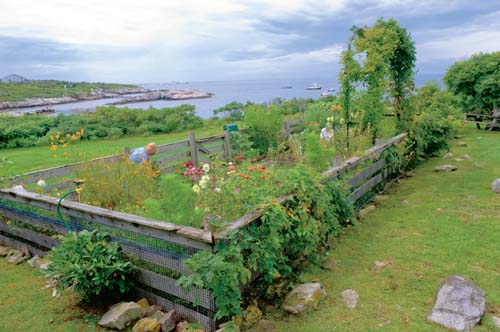
|
This is the story of a famous garden— a story that begins more than a century ago on a rocky windswept island 10 miles out to sea. Celia Laighton Thaxter was only 4 when her father, the new lighthouse keeper, moved his family to White Island, one of the nine Isles of Shoals just off the New Hampshire coast. But even as a young child, she was captivated by the tiny seeds she planted there in a little plot of dirt surrounded by nothing but surf and sky. She marveled at their crescent shape, at the tiny dots running like a string of beads down the center, and, especially, at the astonishing fact that from this dry speck a whole marigold plant would spring forth, a happy burst of color in the barren landscape.
Thaxter, who grew up to be one of the nation's leading poets, never lost her passion for beauty or her joy for working the soil. On nearby Appledore Island, where her parents moved to build and operate the Appledore Hotel, the family home eventually became the setting for Thaxter's salons, which drew some of the best artists, writers and musicians of the time. Her garden out front—and the writing and painting it inspired—became famous, too. During summer months, the house was decked out in color and fragrance, full of bounty from the garden, a living work of art.
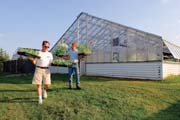
|

|
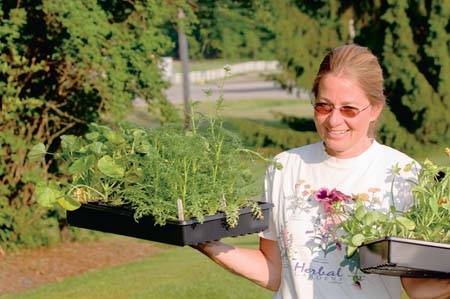
|
| PLANTING DAY: Chris Robarge, left, and Mark Boutilier carry plants to be ferried to Appledore Island on the R/V John B. Heiser, center. At right, Pam Boutilier with some of the 85 species of flowers. | ||
In 1894, the last year of her life, Thaxter finally published the slim volume for which she is best known, An Island Garden, still beloved by gardeners today. Part journal, part handbook, the text is illustrated by a friend, artist Childe Hassam, and it captures the same amazement Thaxter felt as a child kneeling in the dirt with her marigold seeds: "Of all the wonderful things in the wonderful universe of God," she writes, "nothing seems to me more surprising than the planting of a seed in the blank earth and result thereof."
More than a century later, the story of Celia Thaxter continues. Outside, the February winds are blowing. Temperatures plunge. But the air inside the greenhouse at UNH's Thompson School is damp and warm, heavy with the scent of soil and growing things. Two UNH students are bent over a giant table filled with little green pots, row after row of barely sprouted seedlings. The students tamp gently about the roots. They water and fertilize. They make notes. Later they will pinch and prune as needed, making sure that all 1,800 seedlings are ready for their June debut. Each one, after all, is destined for Thaxter's island garden—and months of viewing by eager visitors.
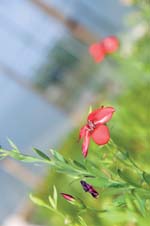
|

|
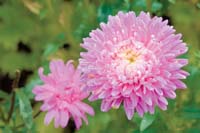
|
| Red Flax, Annual Phlox and Aster | ||
"Our choice of plants is dictated by Celia's book and her garden diagram," explains Thompson School horticulture manager Chris Robarge '71, who has overseen the growing process since 1983. It was Cornell's John Kingsbury, former director of the Shoals Marine Laboratory, who launched the re-creation of Thaxter's garden in 1977 and later passed on the job to Robarge. Now Robarge picks a student or two each year to take on the cultivation of the heirloom seeds, tending them through the winter and spring as Thaxter once did. Their first task, though, is to read her book. "That way, they know what Celia went through to create her garden," says Robarge, noting that there's a bit of performance anxiety as planting day approaches.
Shortly after the semester ends, Robarge meets up with Pam and Mark Boutilier, Shoals Marine Lab employees who serve as caretakers of the garden, to load three trucks and vans with nearly 100 trays of plants before heading for the dock in Portsmouth. From there, the plants are transferred to the lab's research vessel and ferried out to Appledore, where a small group of volunteers, trowels in hand, are prepared to dig. Ten days later, the first tour group comes through, most of whom have read Celia's book, studied the layout of her garden, and are eager to see it in full bloom. "It's really amazing," says Boutilier. "It's like an instant garden. People can't believe it's been so recently planted."
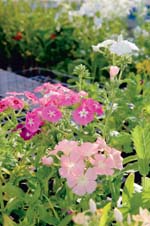
|
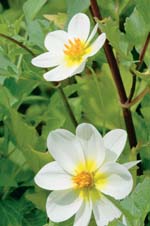
|
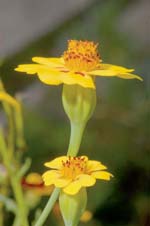
|
| Annual Phlox, Dahlia and Lemon Gem Marigold | ||
All summer long, boatloads of people visit Thaxter's garden, climbing ashore along the same rocky slopes she herself once walked, looking out through the arbor across the wide expanse of sea. The house is gone now, but the garden blooms on: poppies, sweet peas, dahlias, coreopsis, sunflowers—more than 85 species in all. Thaxter's garden is still popular today, says Boutilier, partly because it speaks to something universal and unchanging about the experience of planting and cultivating and watching things grow. "It's a sort of therapy," she says, "a way to find peace."
Thaxter herself found solace in her garden amidst a life that had its share of challenges, including an unfulfilling marriage and a disabled child. "I think the garden got her through," says Boutilier.
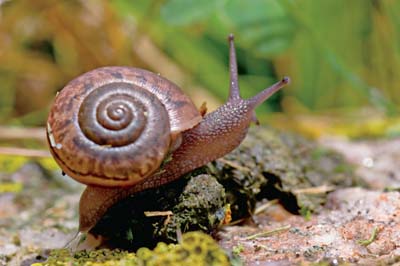
|
A way to create beauty in the face of hardship, Thaxter's garden was widely appreciated by both friends and strangers, who encouraged her to share her secrets. When she finally wrote her book, she explained her success with one word: "'Love.' For that includes all,—the patience that endures continual trial, the constancy that makes perseverance possible, the power of foregoing ease of mind and body to minister to the necessities of the thing beloved, and the subtle bond of sympathy which is as important, if not more so, than all the rest."
Thaxter's words speak to more than the act of creating a garden—they offer advice for "getting through." Which makes sense. She knew, from hard-won experience, that a good life, like any beautiful garden, is a labor of love. ~
Return to Sticker Shock feature story
blog comments powered by DisqusEasy to print version

